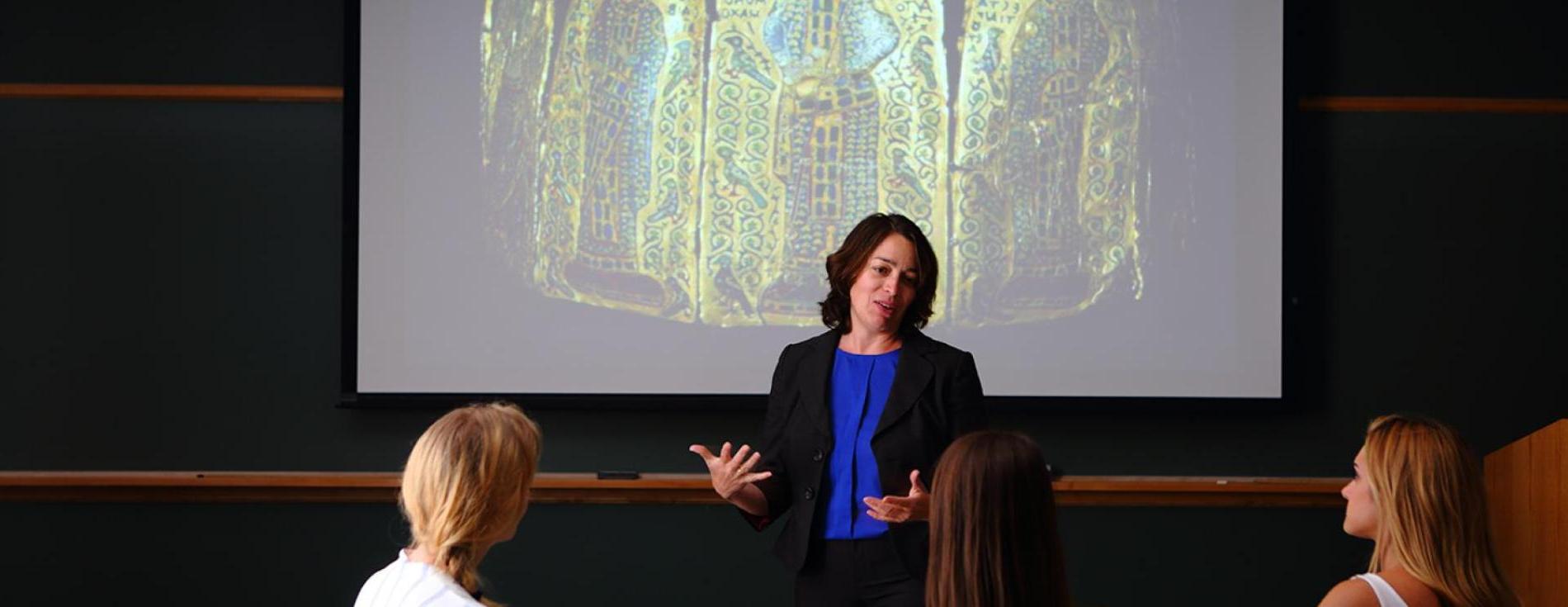
Curriculum and Academic Path
A Bryn Mawr education is a journey, and just as every student is different, every student's academic path will be different.
The College's diverse curriculum offers each student many choices, while the flexible but rigorous requirements ensure some common elements to every experience.
Every first-year student begins the journey with the Emily Balch Seminar, goes through the sophomore planning experience, and engages in advanced research and analysis in the chosen major. Moreover, many students benefit from the opportunities for combined degrees. By design, however, the academic path is not simply a linear progress from A to B. Through advising and through the ethos of a holistic liberal arts education, students are invited to seek out a range of experiences inside and outside the classroom and to incorporate those insights into their own journeys.
First Year Experience
Bryn Mawr supports that growth through a combination of programs and courses. In the academic realm, the Emily Balch Seminar is the center of the First Year Experience.
Outside of academics, the heart of the support for students comes through the year-long Customs program. More than just orientation, Customs ensures students have guidance and a strong residential connection throughout the first year. The ten-week THRIVE program gets students started on their Physical Education requirement and equips them to cope with the challenges of greater personal and academic autonomy and of living in community.
Sophomore Plan
After the roller coaster ride also known as the first year of college, sophomore year offers some time to pause, assess, reflect, and make some decisions. Through workshops, one-on-one advising, and self-reflection, students choose and plan a major, decide how to complete remaining college-wide requirements, and make a plan for including international study, experiential learning and career exploration in their time at Bryn Mawr. The emphasis throughout is holistic and self-directed. Students are encouraged to make use of resources all over campus as they chart their course for the future.
Read more about the Sophomore Planning Process.
Majors, Minors, and Concentrations
In cooperation with Haverford College, the College offers the majors you would expect to find at a liberal arts college and some you might not expect. Traditional fields like Classical and Near Eastern Archaeology continue to attract and be transformed by new generations of students and scholars. Bryn Mawr’s Growth and Structure of Cities program, founded in 1971, was the first interdisciplinary major at the College and an important pioneer in liberal arts colleges more generally. Now Cities, as most people call it, is joined by numerous other interdisciplinary programs, most recently International Studies. For many students who want to develop solid expertise and skills in a field and also prepare to work in fields that cannot be addressed through one disciplinary lens, combining their major with one or more minors or concentrations is the perfect approach. A much smaller number of students opt to pursue a double major. And between five and 10 students each year create and declare independent majors.
Writing in the Major
All the majors have certain elements in common. All use introductory-level courses to ensure that students have a broad understanding of the field; all have one or more required upper-level courses to ensure that students have a shared vocabulary and understanding of the methods of their field.
Beginning in 2014 and 2015, each major will require a writing-intensive course within the major designed to help students learn how to adapt core writing skills to the particular conventions and demands of their field. Students select electives within the major and often in allied fields to explore areas of interest within the field. Finally, all the majors offer the opportunity for a senior project incorporating research, writing or other production, and sustained one-on-one work with a faculty member. When all the major requirements are taken together, a major constitutes approximately one third of a student’s undergraduate coursework.
Minors and concentrations are like mini-majors; almost all require six courses, ranging from the introductory to the more advanced. Minors are not required, but many students opt to include one or even two minors in their program of study.